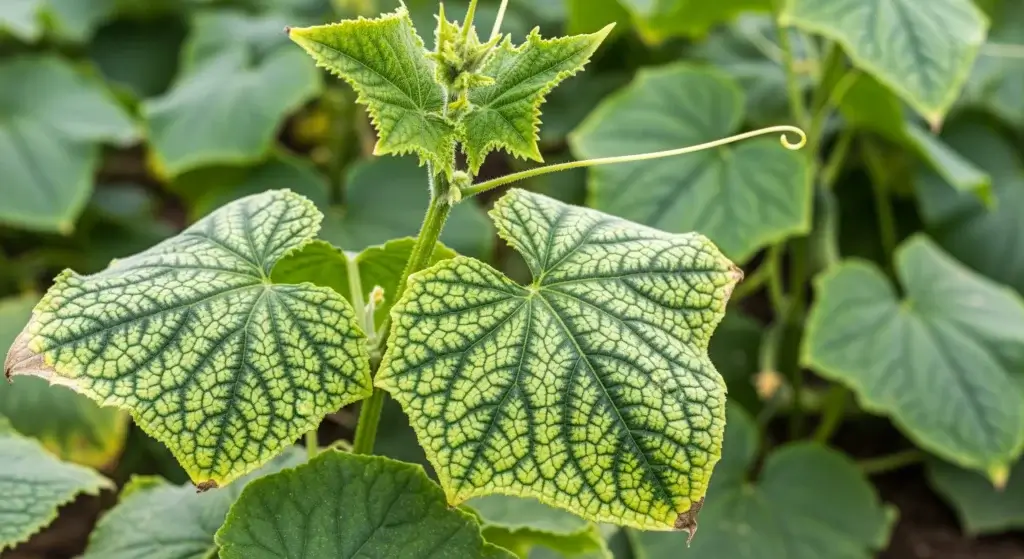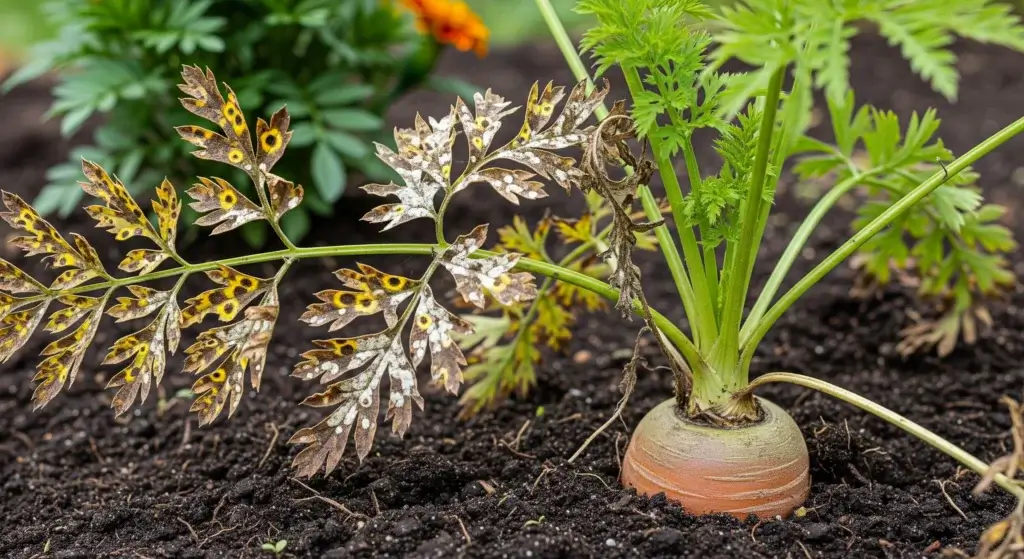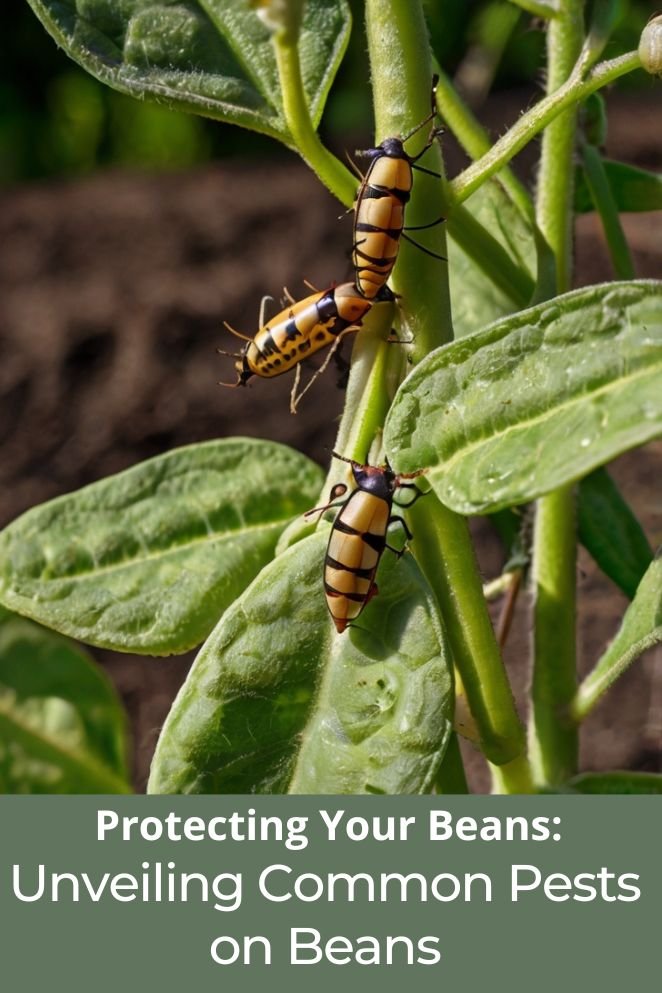
Growing beans can be incredibly rewarding, but it does come with its challenges—particularly when it comes to pest management.
From aphids to bruchid beetles, a wide range of insects can wreak havoc on your bean plants, reducing yield and quality.
Knowing how to identify these pests and understanding the best prevention and control methods can make all the difference in your gardening success.
Common Pests Affecting Beans
Several pests are particularly notorious for attacking bean plants.
Below, we’ll cover the most common ones, how to identify them, and the damage they can cause.
Aphids
Aphids are small, soft-bodied insects that can be green, yellow, brown, or black.
They feed on the sap of bean plants by piercing the stems, leaves, and pods with their needle-like mouthparts.
Aphid infestations can lead to stunted growth, curled leaves, and the production of sticky honeydew, which can encourage the growth of sooty mold.
Aphids can also transmit plant viruses, further damaging the crop.
Mexican bean beetles
The Mexican bean beetle is a type of lady beetle, but unlike its beneficial relatives, it’s a serious pest for bean plants.
Adult beetles are yellow to coppery brown with 16 black spots on their wing covers.
The larvae are yellow and spiny.
Both larvae and adults feed on the undersides of leaves, skeletonizing them by eating the tissue between the veins, which can lead to defoliation and reduced plant vigor.

Bean leaf beetles
Bean leaf beetles are small, oval-shaped beetles that can be yellow, orange, red, or tan, often with black spots or a solid black triangle at the base of their wing covers.
They feed on bean leaves, creating small, round holes.
While the damage from a few beetles may be minor, heavy infestations can significantly reduce photosynthesis, leading to poor plant growth and lower yields.
Spider mites
Spider mites are tiny, spider-like pests that are difficult to see with the naked eye.
They feed on the underside of bean leaves, sucking out the plant’s juices and causing stippling, yellowing, and eventually leaf drop.
Spider mites thrive in hot, dry conditions, and their populations can explode quickly, leading to severe damage if not controlled.
Flea beetles
Flea beetles are small, black, or brown beetles that jump like fleas when disturbed.
They feed on the leaves of young bean plants, creating small, round holes known as shot-holing.
While mature plants can usually withstand some damage, heavy infestations on seedlings can stunt growth or kill the plants outright.
Vegetable leafminer
The vegetable leafminer is a small fly whose larvae burrow between the upper and lower surfaces of leaves, creating winding, white trails.
This damage reduces the plant’s ability to photosynthesize, weakening the plant and potentially leading to lower yields.
Severe infestations can cause leaves to drop prematurely, affecting overall plant health.
Garden fleahopper
Garden fleahoppers are tiny, black or dark green insects with wings that they hold flat over their bodies.
They feed on the undersides of leaves, causing stippling, yellowing, and leaf drop.
While they typically don’t cause severe damage, large populations can weaken plants and reduce bean production.
Potato leafhopper
Potato leafhoppers are small, wedge-shaped insects that feed on bean plants by sucking sap from the leaves.
Their feeding causes a condition known as “hopperburn,” where the leaves turn yellow, curl, and eventually die.
This pest can reduce both the quality and quantity of the bean harvest, particularly in dry conditions.
Bruchid beetle
The bruchid beetle, also known as the bean weevil, is a serious pest of stored beans.
The adult beetles lay their eggs on the surface of beans, and the larvae burrow into the beans to feed.
Infested beans develop small holes and become unfit for consumption.
This pest is a significant concern for both commercial growers and home gardeners who store beans after harvest.
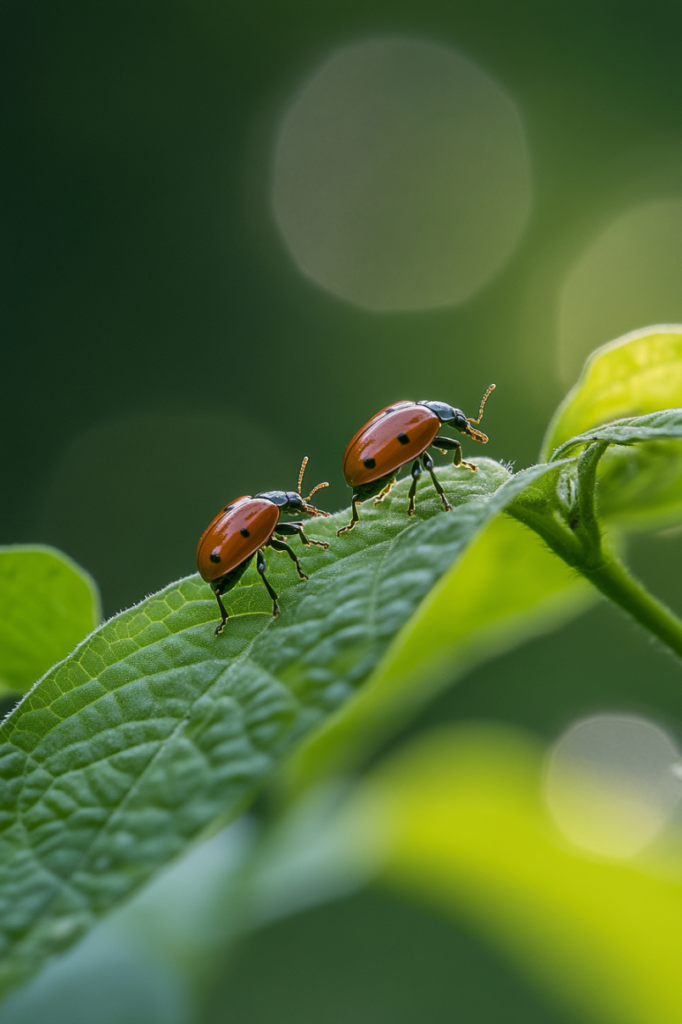
Prevention and Control Methods
Effectively managing bean pests requires a combination of cultural practices, natural control methods, and, when necessary, chemical interventions.
Here’s how you can protect your beans from these common pests:
Cultural practices
Crop rotation
Changing where you plant beans each year is a simple but effective way to manage pests.
By rotating beans with other types of plants, you interrupt the life cycles of pests that are specifically attracted to beans.
This helps reduce the chance of pest build-up.
Resistant varieties
Some bean varieties are bred to be resistant to certain pests.
Choosing these varieties can greatly reduce the risk of infestations.
Check with local garden centers or extension services to find out which varieties are best for your area.
Proper spacing
Giving your bean plants enough space improves air circulation around them.
Good air flow helps prevent the conditions that pests thrive in, such as excess moisture or humidity.
Avoid planting beans too close together.
Sanitation
Keeping your garden clean is crucial. Remove plant debris, fallen leaves, and weeds regularly, as these can harbor pests and their eggs.
By maintaining a tidy garden, you reduce the places where pests can hide and breed.

Natural pest control
Beneficial insects
Some insects are helpful because they feed on pests that harm your beans.
For example, ladybugs, lacewings, and parasitic wasps target pests like aphids and bean beetles.
You can attract these beneficial insects by planting flowers that they like or by introducing them into your garden.
Neem oil
Neem oil is a natural insecticide that’s derived from the neem tree.
It works against a range of pests, including aphids, spider mites, and beetles.
It’s a good organic option that disrupts pests’ feeding and reproduction.
Hand-picking
If you have a small garden, manually removing pests like Mexican bean beetles or bean leaf beetles can be effective.
Regularly inspect your plants and remove any visible pests to keep their numbers under control.
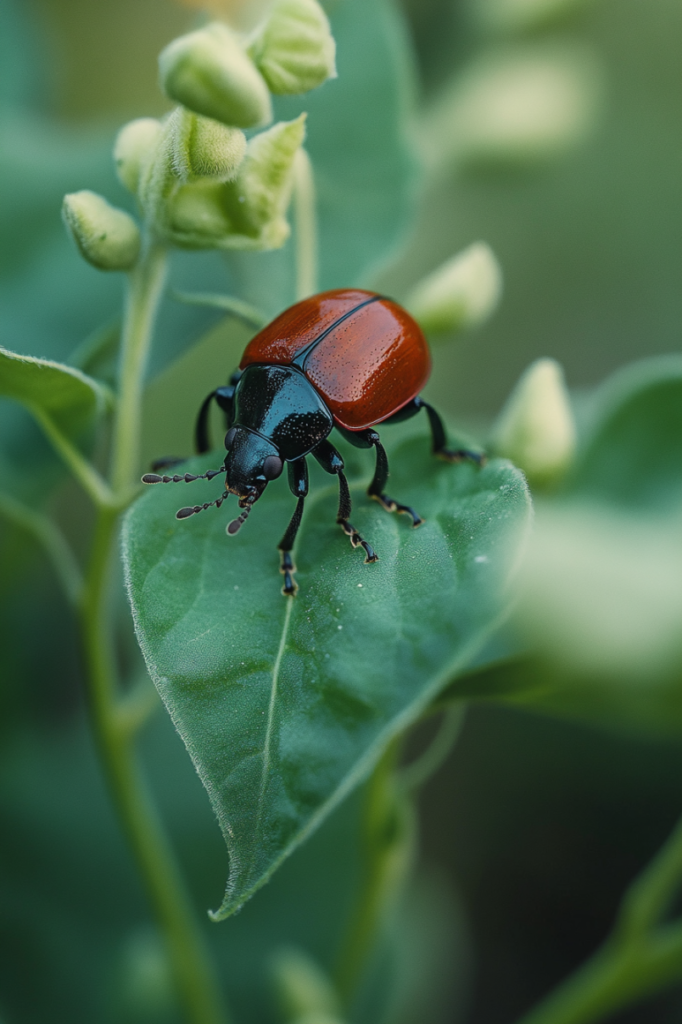
Chemical control
Insecticidal soaps
These soaps are designed to target soft-bodied insects like aphids and spider mites.
They work by breaking down the pests’ cell membranes, causing them to dehydrate and die.
Insecticidal soaps are a more targeted option and are less harmful to beneficial insects and the environment compared to some other chemicals.
Pyrethrin-based sprays
Pyrethrin is a natural insecticide made from chrysanthemum flowers. It’s effective against a wide range of pests, including beetles and leafhoppers.
It works by attacking the nervous systems of insects.
While it’s natural, it’s still important to use it carefully and follow the instructions.
Systemic insecticides
For severe pest problems, systemic insecticides might be necessary.
These chemicals are absorbed by the plant and target pests that are feeding on it.
They should be used only as a last resort due to their potential impact on the environment.
Always follow the label instructions to minimize harm to beneficial insects and surrounding wildlife.
Final Thoughts
Managing pests on bean plants requires vigilance and a proactive approach.
By understanding the common pests that can affect your beans and implementing a combination of cultural, natural, and chemical controls, you can protect your crop and enjoy a bountiful harvest.
Remember, early detection and consistent monitoring are key to keeping your bean plants healthy and pest-free.

